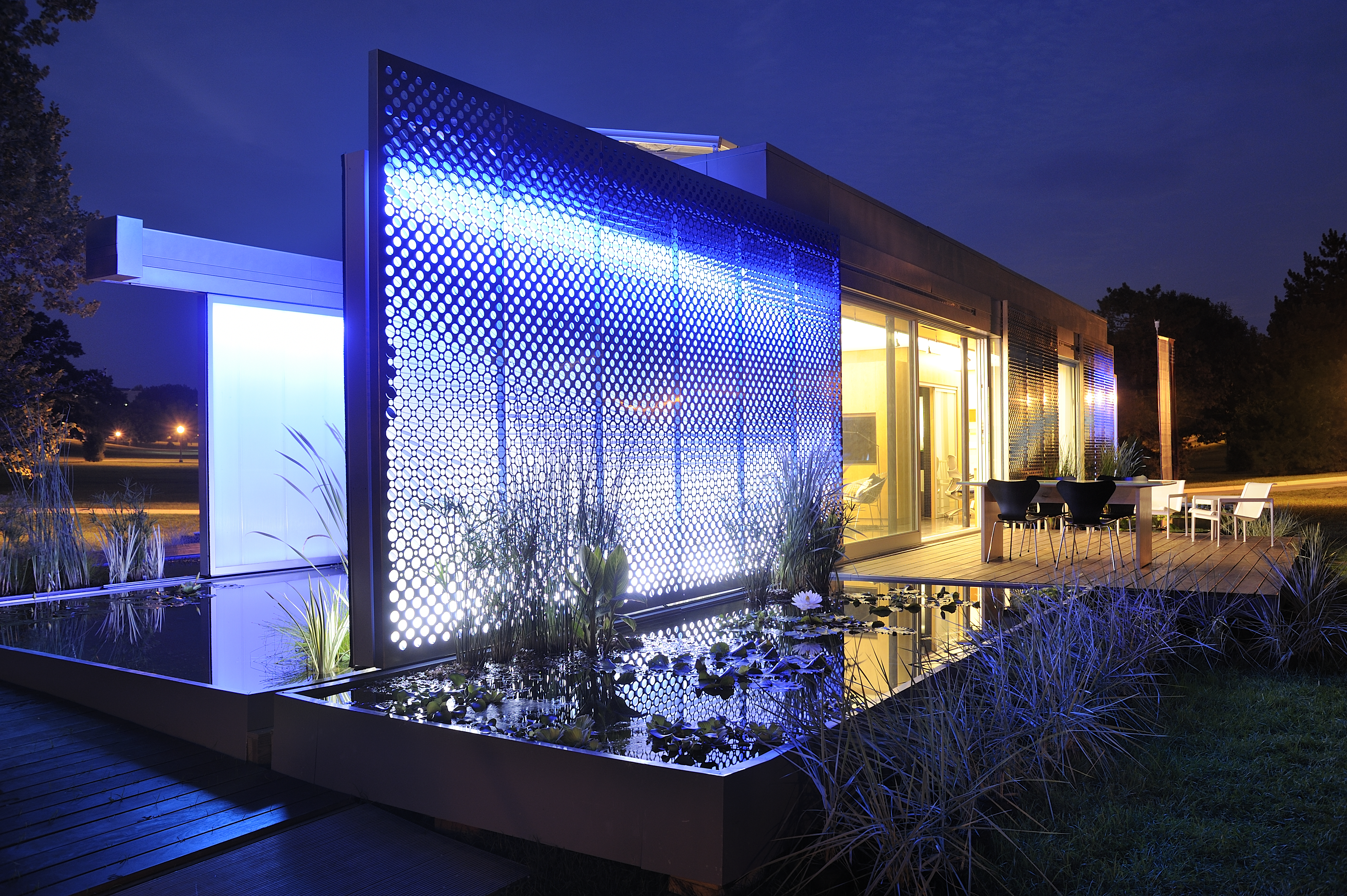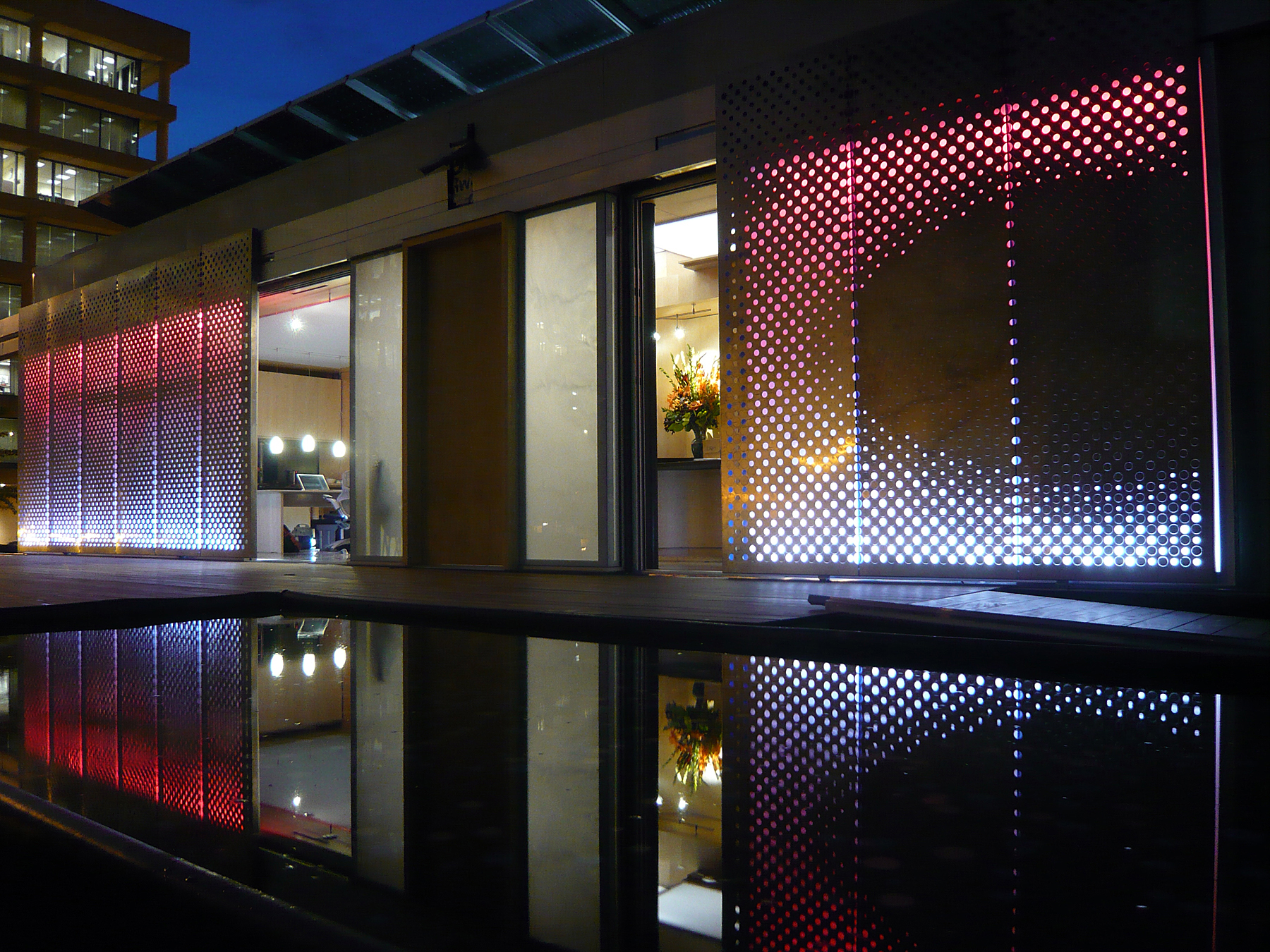Virginia Tech LumenHAUS: A multi-faceted, multi-tasking solar star

Two years after completion, Virginia Tech’s award-winning solar home still is contributing to teaching, research, and the art and science of architecture.
The 600-square-foot home, which now resides on the Blacksburg campus, made its latest hit with the American Institute of Architects as a recipient of one of the organization’s highest honors being presented on May 18.
With its innovative integration of design and technology, the Virginia Tech LumenHAUS shows that one can live with comfort and quality in a small space. In commenting on 2012 AIA Honor Award for Architecture bestowed on the Virginia Tech team, Jeff Potter, institute president, said that LumenHAUS shows a way housing can be adapted for tough economic times and still provide the most important elements.
“At a time when our profession has been challenged in ways most of us have not experienced in our lifetime,” said Potter, “your project, [Virginia Tech] LumenHAUS, is both a source of inspiration and a timely reminder that quality is not a luxury, but proof of the durability of a society’s values and a sure sign of its health.”
Faculty leaders of the Virginia Tech solar team, Joseph Wheeler; Robert Dunay, the T.A. Carter Professor; Robert Schubert; and David Clark, will travel to Washington, D.C., to accept the award. The solar house, designed and built by a student-faculty team from the School of Architecture + Design in the College of Architecture and Urban Studies and several College of Engineering departments, is one of nine recipients in the architecture category of the annual awards. A nine-member jury chose the honorees from about 500 nominations. Other than the Virginia Tech solar house, all the other winners in architecture this year were from professional architect firms.
The architecture institute award is only one of the recognitions the house has earned, one of which was the 2010 Solar Decathlon Europe title. For that, the house travelled all the way to Madrid, Spain. Other significant events have occurred both pre- and post-decathlon. But neither the house nor its team is resting on their laurels. Instead, the house regularly is used as a teaching resource and research project for both undergraduate and graduate students in architecture, engineering, and computer science.
“One of the most significant measures of [Virginia Tech's] LumenHAUS is the connectivity of creativity and technology,” said Dunay. “Its success is driven by integration of teaching and research."
“Having the house on site as an immediate resource provides spontaneous occasions for poignant teaching moments,” he said. Dunay and fellow School of Architecture + Design faculty members Wheeler, Schubert, and Clark have been with the project from the beginning and often use the house to explain and discuss ideas and issues that arise during classroom work.
One result of these learning experiences is that several classes have been developed through solar house research led by Wheeler. These include “The House of the Future,” which focuses on components, systems, and innovative materials that might be used in a new dwelling; and “Urban Garden,” in which students build an exhibit that is a prototype unit for the largest undeveloped site in the city of Chicago. The garden uses prototypes of innovative wall and screen systems.
Virginia Tech's solar house also serves as a research laboratory and demonstration facility, as upgrades and new innovations are added to it. "When [Virginia Tech's] LumenHAUS was initially built, we took the opportunity to instrument every aspect that dealt with the house's energy performance and power production/consumption," said Schubert. "We are confident this investment will continue to support a diverse and varied research agenda well into the future."
Students will be collecting data on various systems in the solar house to determine how well they work and differences in efficiency and operation components are changed.
Future and ongoing projects include plans for students in electronics to conduct power monitoring and monitor building control system data. Computer science students are working on updated control and interface systems for the iPad, from which the solar house's heating, lighting, airflow, and other aspects can be controlled.
Mechanical engineering and architecture faculty have applied for a grant to outfit the house with a structurally integrated geothermal foundation system. This joint project is designed to collect data for use of geothermal systems in multiple-family housing.
With the ever-changing research, the solar house continues to give students a chance to learn everything from design to construction that they wouldn’t experience in an architecture college studio.
“The consequences of design decisions are real and students learn of the correspondence between drawings and built work in a firsthand manner,” Wheeler said. “Either the components and systems work or they do not. In the case of the latter, it is the students’ responsibility to find out why.”





